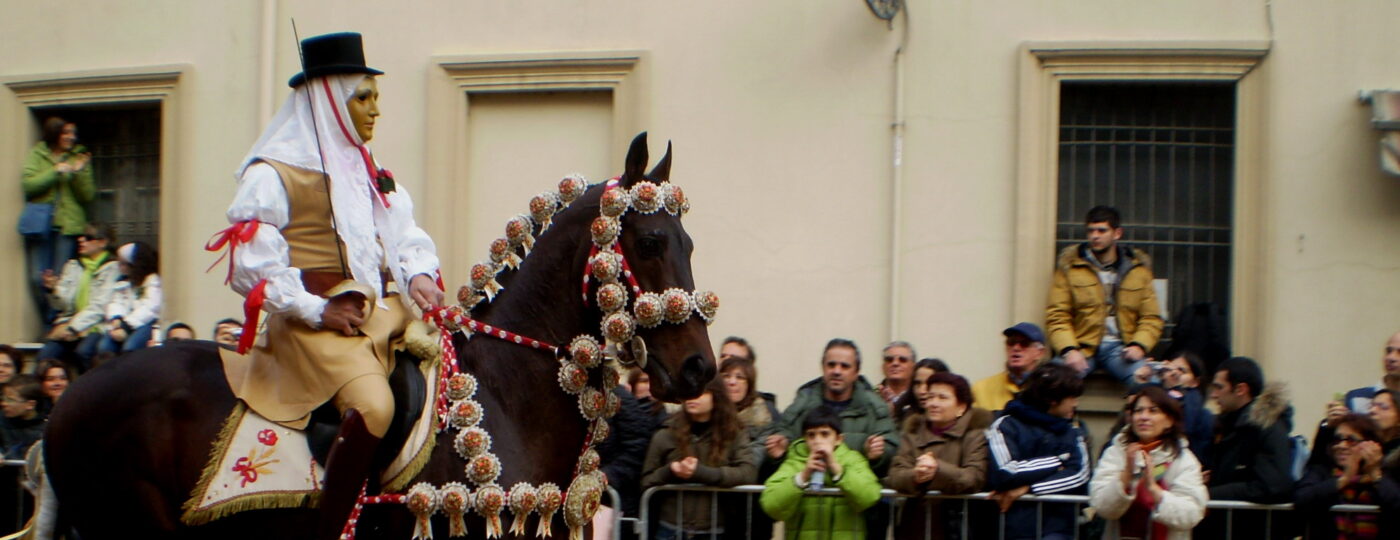At the northern limit of the Campidano plain, near the mouth of the river Tirso, in the center of a system of very fishy ponds, stands Oristano, the capital of western Sardinia since 1974. Its origin is set at 1070, when from the nearby city of Tharros, devastated by the Saracens, the population migrated to the new settlement. Between 1100 and 1400 the centre arose of great importance, when it became the capital of the Giudicato of Arborea led by Mariano IV and his daughter Eleonora, the editors of the collection of laws called Carta de Logu among the first and modernest in Europe.
In the historic center there is a small artistic jewel, the Cathedral, built in 1228 with the contribution of Lombard workers, then rebuilt in the 17th century in Baroque style. The exterior is therefore characterized by an overlap of artistic styles as well as its interiors where elegant baroque schemes alternate with neoclassical and contemporary forms. It is all adorned with works of art such as the wooden statue of the Annunciation and the marble one of the Madonna del Rimedio dating back to the fourteenth century.
The Tower of Mariano II, in blocks of sandstone, was erected in 1291 and it is, together with the opposite tower of Portixedda, the only trace of the ancient wall circle.

The city also has beautiful civil buildings such as the neoclassical Parpaglia Palace where the Antiquarium Arborense is located, which houses several archaeological collections from the excavations of Tharros, an art gallery and a section dedicated to the time of the Giudicati.
A natural area of great interest near Oristano is the protected marine area of Sinis, in the municipality of Cabras, where it is possible to visit the ruins of Tharros, a real city founded in the seventh century BC and abandoned in the eleventh century, where it is possible to retrace almost two millennial of history from the Nuragic civilization to the Arborean Judicial age. The open-air museum is a natural amphitheater overlooking the sea where there are the remains of the nuragic village, abandoned before the advent of the Phoenicians. Also in the municipality of Cabras, it’s a must visit its pond characterized by a large birdlife and picturesque fishermen’s huts.
In the town of Oristano there is also the promenade of Torregrande, which is, during the day a favorite bathing destination for young people and families and at sunset becomes the center of the Oristano summer nightlife.
The traditional event of the Sartiglia, which takes place according to a centuries-old ritual during the Carnival period, is particularly distinctive: in fact, it was probably introduced in 1350 by Mariano II to celebrate his wedding. The head of the race, su Componidori, a figure of untouchable sacredness, on the day of the race, after being dressed by a group of costumed girls, is Massaieddas, leads the procession of masked riders, trumpeters and drummers that crosses the city to the carousel square. Here, after the sound of a specific signal, he gallops and running to put his sword into the hole in the center of a silver star hanging on a thread: if he succeeds, the harvest of the year will be abundant. After him all the other knights have to do the same thing. It represents the most important Oristano event of the year that attracts many tourists from all over the world. During the event, the city dresses up and after seeing the race to the star and the pair (spectacular stunts on horseback), turn to the various stands to taste the typical sweets of the carnival accompanied by a few glasses of Vernaccia di Oristano.
Another event is the ancient Santa Croce fair or national fair of Oristano, dedicated to the exhibition of Italian equine breeds born in Sardinia, which includes an agri-food market and a market exhibition; it takes place in September. As for gastronomy, Oristano offers strong and unmistakable flavors: the tasting of the famous mullet bottarga (dried and salted fish eggs), coming from the nearby ponds, and eels, cooked according to a thousand recipes, should not be missed. Among the sweets, the mustazzolus, based on wine must, are very characteristic.